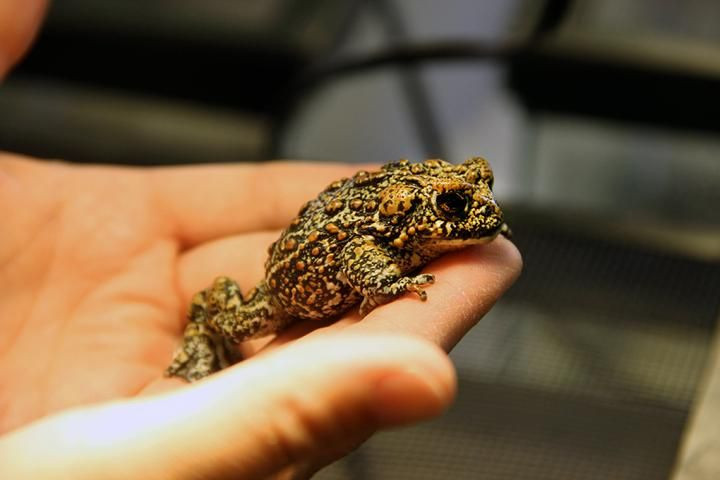Three New Toad Species Discovered In Nevada’s Great Basin

In the desert-dominated expanse of Nevada’s Great Basin, researchers found three species of toads that were previously unknown to science. The three new species are all quite small in size — about two inches long when fully grown — and have slightly different colors from each other.
Called the Dixie Valley toad, Railroad Valley toad and Hot Creek toad, all three were found during a 10-year survey of the Great Basin, conducted by Dick Tracy, a biology professor at the University of Nevada, Reno, and his team. The survey covered 190,000 square miles of the ancient lake bottom that is now the Great Basin.
“We've found the toads in small, wet habitats surrounded by high-desert completely cut off from other populations. These are absolutely new, true species that have been separated from other populations for 650,000 years,” Tracy, who was lead scientist on the project, said in a statement Friday.
Read: New Colorful Frog Species Discovered In Ecuador
The team behind the discoveries used multiple tests, including DNA, to analyze the characteristics of the toads and found evidence to support the recognition of three new species, as distinct from the closely related Western toad which is common throughout the western United States.
The Dixie Valley toad, which has olive skin with golden patches, is found only in an isolated spring-fed marsh less than four square miles in size, in Churchill County about 100 miles east of Reno. The regions adjacent to the marsh all around are arid. The Tonopah Basin in the central Nevada desert is home to the Railroad Valley toad, while the Hot Creek toad calls the Hot Creek Mountain Range 35 miles away its home.
“Our goal has been to understand the relationships among toad populations in the Great Basin. We’ve found that our knowledge of amphibian diversity in the western United States remains incomplete and that novel discoveries continue to occur, even in unlikely settings. This is really, really neat; an exciting thing, to find something not known to exist before,” Tracy said in the statement.
The discovery of previously unknown amphibian species is a rare thing in the United States, with the last one — a frog — found in 1985. So finding three new species at a time is quite remarkable. The last time a new toad species was found was in 1968, and the Wyoming toad is now extinct. And the newly discovered species are already under threat too.
Read: The Sticky, Soft Business Of Frogs Catching Their Prey
The Bureau of Land Management is currently reviewing a geothermal power project that is planned to come up on a site adjacent to the marsh where the Dixie Valley toad lives. If the plant comes up as planned, it could dry up the marsh and threaten the survival of the species, which Tracy said is “a good candidate for an Endangered Species Act listing.”
Interestingly, the second species listed under the 1973 act was also a toad species, the Houston toad.
One of the three species, the Dixie Valley toad, was described in the peer-reviewed journal Zootaxa in a paper earlier in July. The paper’s lead author is Michelle Gordon, a master’s student from the university.
© Copyright IBTimes 2025. All rights reserved.





















